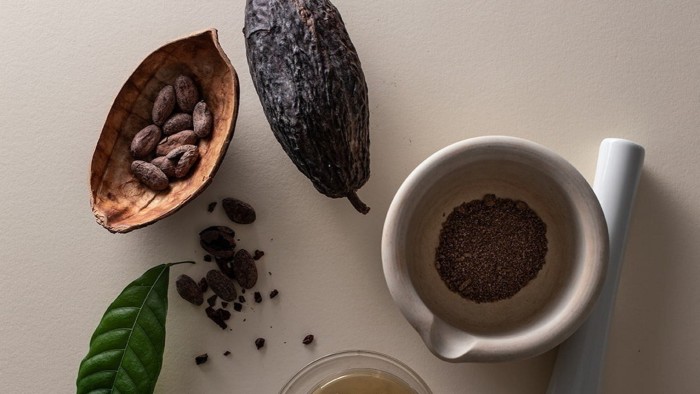Skyrocketing raw commodity prices and growing sustainability pressures are pushing chocolate and confectionery companies to pour funding into finding alternative ingredients for sweet treats.
Mondelez International, the maker of Oreo, was among the investors that took part in a $4.5mn seed funding round for cell-based cocoa start-up Celleste Bio earlier this month, while British food ingredients company Tate & Lyle also announced it had partnered with BioHarvest Sciences to develop sweeteners from synthetic plant-derived molecules.
The moves came as cocoa futures traded in New York climbed above $10,000 per tonne, continuing a dizzying rally that began a year ago. At their peak in April, prices for the key ingredient in chocolate surpassed $12,000 per tonne, an almost threefold increase from January.
Growers in West Africa, who produce more than two-thirds of the world’s cocoa, have faced a double blow of disease and adverse weather, driven by climate change, which has curbed output and deepened a global shortage of beans.
“If we don’t change how we source cocoa, we won’t have chocolate in two decades,” said Michal Beressi Golomb, chief executive of Celleste Bio. With cell-cultured cocoa, the industry “won’t need to be dependent on nature”, she added.
Global shortages and record prices are driving a surge of interest from chocolate and confectionery companies as well as investment, according to Golomb. “They’re really worried about having a sustainable, consistent supply of quality cocoa,” she said. “Everybody wants to be part of the party.”
The Israeli company, which was established in 2022, is one of a growing group of start-ups using cell culture technology to bypass the need for traditional farming methods that are vulnerable to climate change and market instability.
These innovations could also provide a solution to regulatory challenges, such as the EU’s new deforestation regulation, which requires proof that commodities such as cocoa were not grown on deforested land, adding further pressure on supply chains and prices.
Other groups are looking at how to make sweet treats with alternative, more easily sourced raw ingredients. Last year Finnish confectioner Fazer rolled out a limited edition cocoa-free “chocolate” made from local malted rye and coconut oil. Since 2022, the Helsinki-based company has also been working with VTT, Finland’s state-owned research centre, to grow cell-based cocoa pods.

“Nearly four years ago, research told us climate change would impact the availability and price of cocoa,” said Annika Porr from Fazer Confectionery’s Forward Lab. “This year it has become a reality.”
Elsewhere, Cargill, the world’s largest agricultural commodities trader, last year partnered with start-up Voyage Foods, which produces sustainable foods such as chocolate and nut spreads without their traditional ingredients of cocoa, peanuts and hazelnuts. It does so by using grape seeds, sunflower protein flour, sugar, fat, and natural flavours.
“Cocoa prices weren’t in the news when we started. Most people probably in the US or the UK couldn’t point to where cocoa was grown. And now, with prices up, it’s a lot easier to see why this is necessary,” said Adam Maxwell, CEO of Voyage Foods.
Consumers were looking for “even more sustainable indulgences, which taste great and are produced with no nut nor dairy allergens used in the recipe formulation”, Cargill added.
Whilst the price of sugar — whose production is not included in the EU rules — has remained relatively stable, the industry also faces mounting pressure to address its environmental footprint and meet consumer demand for healthier options.
Tate & Lyle, once a sugar producer and now trying to become a sugar reducer, is working with start-up BioHarvest Sciences to develop synthetic sweeteners derived from plant cells.
BioHarvest Sciences has invested $100mn over the past 17 years to develop the technology, which extracts and then magnifies critical plant compounds that drive sweetness while suppressing bitter flavours.
The partnership could help Tate & Lyle distance itself from ultra-processed foods, for which it has drawn scrutiny from investors and scientists.
“Our customers and their consumers want something that is cost effective and naturally sourced,” said Abigail Storms, senior vice-president at Tate & Lyle, which sells to packaged food companies such as McVitie’s biscuit maker Pladis.

While the volatility of commodity markets may be driving investment in alternatives, growing ingredients in a laboratory rather than on a tree or in a field is not cheap.
Celleste Bio aims to reach cost parity with pre-2024 cocoa prices — about $7,000 a tonne for cocoa butter and $3,000 for cocoa powder — by 2027 once they are in the market and have scaled up production, said Golomb.
Tate & Lyle also wants to make sure products made using its sweeteners do not cost more than “the full-calorie or full-sugar alternative”, said Storms. “It’s all about democratising those benefits.”
Breaking away from traditional commodity markets is also a battle against red tape and shifting consumer expectations. Fazer Group’s cocoa-free bar, for instance, cannot be called “chocolate,” instead bearing the label “candy tablet” due to EU rules that reserve the name for products containing cocoa.
Cell-based cocoa faces a similarly tough regulatory maze, according to Porr, with “novel food” approval likely to be a steeper climb in the EU compared with the US.
Winning over consumers may be just as challenging. Fazer Group’s initial research suggested that transparency about how cell-based cocoa was made could help sway public opinion, said Porr, but taste and texture were the ultimate tests. “Consumers really expect it to taste and feel similar to traditional cocoa,” she said. “There is still work to be done.”
Read the full article here




